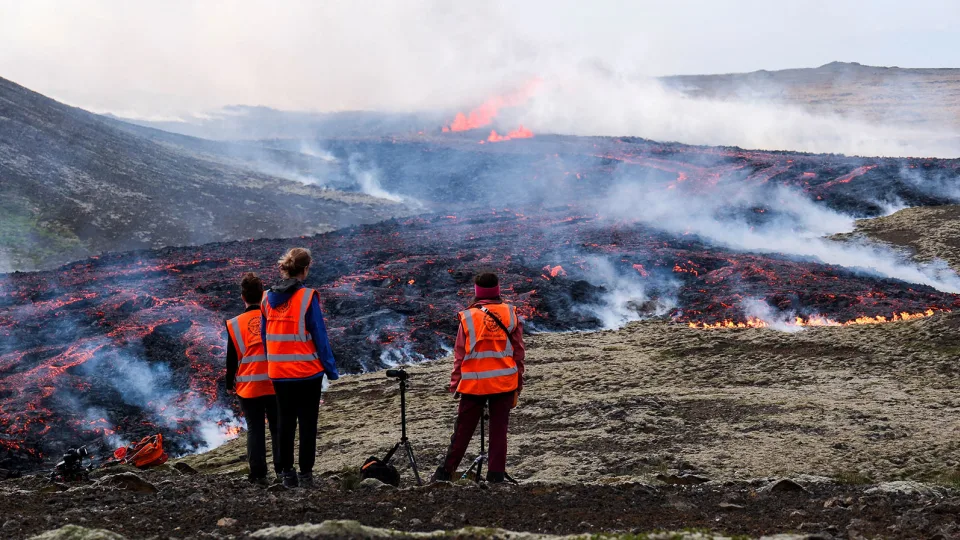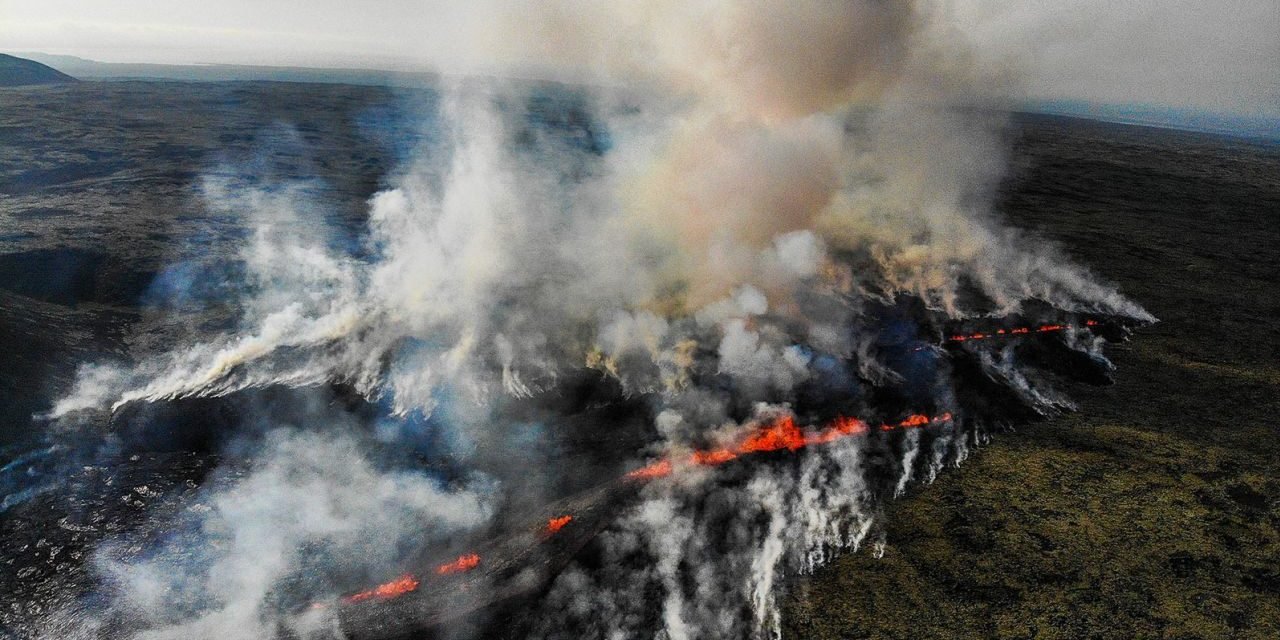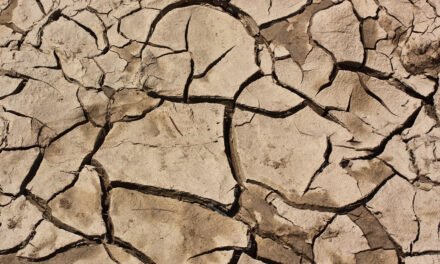An intense volcanic eruption on Mount Fagradalsfjall in Iceland has sparked concerns as it spews out life-threatening toxic gas pollution.
The eruption, which began on Monday following heightened seismic activity in the area, has prompted authorities to issue warnings and take precautionary measures to protect residents.
In response, residents in the nearby Reykjanes peninsula have been confined to their homes and advised to keep their windows closed and ventilation turned off due to the risk of deadly toxic gases emitted by the volcano.
The Icelandic police have implemented restrictions on access to the volcano, located just 20 miles from the capital city Reykjavik, in light of the life-threatening toxic gas emissions.
The Department of Civil Protection and Emergency Management stated that “enormous and life-threatening toxic gas pollution” necessitated the restrictions.
They have also urged hikers in the area to retreat for their safety.
Kristin Gudmundsdottir, a natural hazard specialist at the Met Office, emphasized the seriousness of the situation, stating that “we need to wait and see how the eruption develops.”
This recent eruption comes after a period of intense seismic activity in the region.
Despite the volcano’s proximity to Keflavik Airport, the country’s international air traffic hub, no disruptions or damages have been reported thus far, and the airport remains operational. However, smoke generated by the eruption temporarily delayed some domestic flights as it spread over the road connecting Reykjavik and the airport.

Iceland’s volcano eruption , Photo: Kristinn Magnusson / AFP
The Icelandic government has classified the eruption as a fissure eruption, which typically does not cause significant explosions or emits substantial amounts of ash into the stratosphere.
The Icelandic Meteorological Office confirmed that the eruption is relatively small and has not resulted in the release of ash into the atmosphere.
Instead, lava is emerging from a 656-foot-long fissure on the mountain’s slopes in the form of “a series of fountains.”

Photo: Kristinn Magnusson / AFP / Getty Images
In recent years, the Fagradalsfjall volcano has erupted twice without causing any flight disruptions or damage.
The area has become a popular attraction, with hundreds of thousands of people visiting to witness the spectacular lava flows during the previous eruptions.
Iceland, situated above a volcanic hotspot in the North Atlantic, experiences eruptions every four to five years on average.
The most notorious eruption in recent memory was the 2010 Eyjafjallajokull eruption, which released massive ash clouds into the atmosphere, leading to widespread airspace closures across Europe and grounding over 100,000 flights.
As Iceland grapples with the current volcanic activity, authorities continue to monitor the situation closely.
With 33 active volcanic systems, the highest number in Europe, Iceland remains vigilant in assessing and responding to potential volcanic events.
Although effusive eruptions like the present one have not posed significant dangers, the increased volcanic activity suggests a new cycle that could last several years.
The historical impact of volcanic eruptions in Iceland serves as a reminder of their potential consequences.
The 1783 eruption of the Laki volcanic fissure resulted in Iceland’s most devastating environmental and socioeconomic catastrophe.
It led to the death of a significant portion of the country’s livestock, a famine that claimed the lives of a quarter of the population and had long-lasting meteorological effects.
Some experts even speculate that the eruption played a role in triggering the French Revolution.
As the situation unfolds, authorities and scientists will continue to monitor the volcanic activity, ensuring the safety and well-being of residents and visitors in Iceland.










